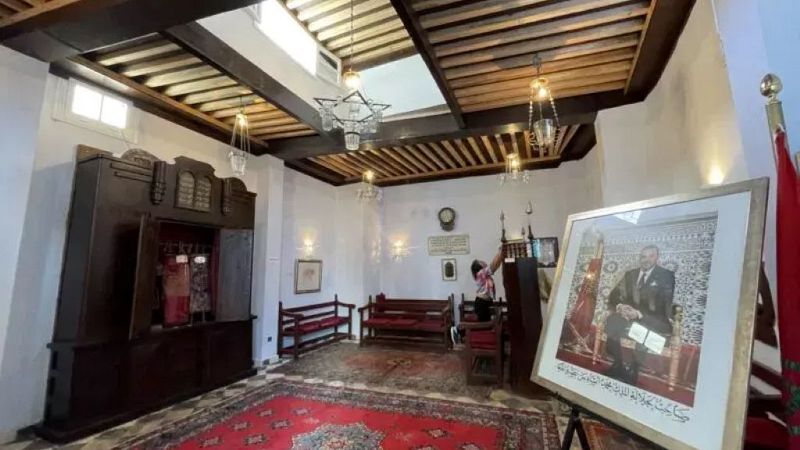Historic synagogue recognised as Moroccan state heritage site

Down a narrow alley in the Moroccan coastal town of Asilah, is a building of historical and spiritual significance.
After decades of neglect, the centuries-old Kahal Synagogue was recently restored and brought back to life.
Moroccan Jews are an ancient community, dating back to Roman times, and the Asilah synagogue was built in 1824.
At the entrance is a photo showing the synagogue before restoration work began, unrecognizable from its present state.
Inside the synagogue, the centre of the space is taken up by the teba, a wooden pulpit from which the Torah is read, which has been carefully restored to resemble its original form.
Aaron Abikzer, vice-president of the Tangier Jewish Community, says when he arrived in the town, he found the synagogue in complete ruins.
Together with the people of Asilah, he decided to restore it.
“They drew for me what the synagogue looked like, and with their drawings, I had it restored to its original state, including everything in the walls, even the pews," he says.
Visitors to the site can see carefully preserved artefacts, as well as photos and marriage certificates, testifying to the community’s long presence in the city.
An authentic wooden ceiling and traditional lighting fills the space with a soft glow.
Sonia Cohen Toledano, responsible for preserving the cultural heritage of the Tangier Jewish Community, says that for years she kept religious objects from various synagogues that had been closed.
“With that, I was able to fill the synagogue,” she says.
“You see, even the carpets, they're all old carpets, especially, that belonged to families and that we reused."
Among the most important elements of this revived heritage is the mikveh, a ritual bath used for spiritual purification.
On the lower floor, two water basins dedicated to this purpose are visible, as is an ancient oven used to heat the water.
On the upper floor of the mikveh, there are two bathrooms that retain their traditional character and are covered by a concave ceiling to retain heat and steam.
The wooden door of the mikveh reflects the authentic architectural style, its details mimic Jewish art.
Alongside the synagogue, facing the sea, is the Asilah Jewish cemetery.
It is home to the graves of Jewish families who have lived in Asilah for generations and have become a magnet for tourists and those interested in Moroccan Jewish heritage.
Thanks to the efforts of the Jewish community, the synagogue, the cemetery, and the mikveh were officially registered as Moroccan heritage sites in February 2025.
"We asked for these places to become state monuments and state heritage. After two years, we received an announcement that the Minister of Culture has registered these three places as state heritage. I'm very happy," says Abikzer.
The number of Jews in Morocco numbered around 300,000 in the 1950s, but today there are only an estimated 5,000.
Yesterday

